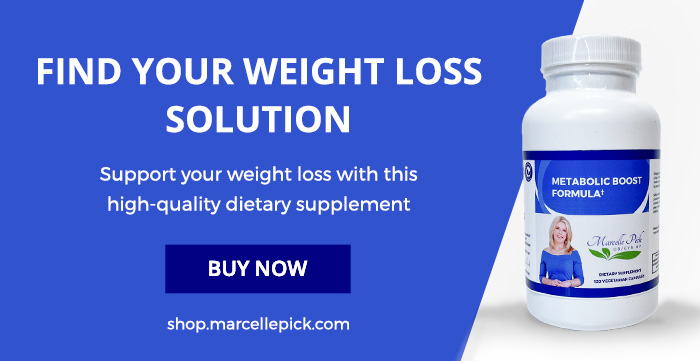Updated 04/09/2023
When I told Sandy that I thought an elimination diet was the best course of treatment for her symptoms, she cringed. “Elimination diet? Doesn’t that mean I can’t eat much of anything?”
The answer, of course, is no. There are so many delicious options on an elimination diet, and the best thing about it is that you can eat as much as you want of the foods that are allowed.
Still, it is far more restrictive than most people are used to. But the key to getting your head around an elimination diet is that it’s not forever!
Unlike most diets, even those that are less restrictive, an elimination diet is really designed not just to help you lose weight and feel better but to also help you understand which foods are “right” and “wrong” for you.
The modern American diet is full of things that can wreak havoc on your hormones, leading to imbalances that leave you feeling weak, irritable, and exhausted – not to mention the unwanted weight gain that often accompanies hormonal dysfunction.
Sandy, like many women, had been depending on convenience foods, vending machine snacks, caffeine and sugar to get her through her days. At night, she said, the only way she could wind down was with a glass of wine or two.
I listened to her fears and concerns about overhauling her diet, and then I told her what I tell all my patients: trust me. I wasn’t going to throw her into deep water when she didn’t know how to swim. I’d be with her every step of the way. And, I assured her, there’s more than one way to do an elimination diet. We could start with baby steps.
An elimination diet is one of the best approaches to identifying things you may be consuming that lead to hormonal imbalance. And because many of the common symptoms women come to see me about are a result of hormonal dysfunction, I often recommend we start here.
What is hormonal imbalance?
Your body’s systems are regulated by hormones. These chemical messengers help cells communicate, and prompt many critical biological functions. From reproduction to metabolism, mood to body temperature, and much more – your hormones have a direct impact on the way your body functions.
When hormones aren’t in proper ratio with one another, the messages they carry can become mixed up, prompting your body to produce more or less of a specific hormone, which only compounds the problem. Vital functions cease, and you end up with chronic inflammation, autoimmune disease, and other conditions that leave you feeling miserable.
There are times in your life that lead to natural fluctuation in hormones, such as puberty, pregnancy, menstruation, and menopause. While not as serious as chronic imbalances, a range of symptoms can accompany these natural fluctuations as well. So supporting your body all the time is a great way to keep hormones as balanced as you can, and your body working at optimal levels.
What leads to hormonal imbalance?
In addition to those natural fluctuations, many lifestyle factors can lead to hormonal dysfunction. Medications, environmental toxins, dysfunction in one or more major systems in the body, processed foods, artificial sweeteners, poor sleep, lack of exercise – the list goes on and on.
Hormonal imbalance leads to symptoms like stubborn weight gain, headaches (including migraines), acne and other skin problems, bloating, stomach cramps and other gastrointestinal problems, candida or other yeast infections, thyroid problems, extreme fatigue/exhaustion, frequent colds, flu or infections, and many more.
What can I do about it?
One of the most common (and easiest to address) root causes of hormonal imbalance is food intolerances. I’m not talking about full blown food allergies. If you have one of those, you already know it!
With food intolerances or sensitivities, you won’t land in the hospital immediately after ingesting the food; symptoms may appear slowly over time. And the more you eat the food you have a sensitivity to, the more uncomfortable your symptoms may get.
These symptoms include chronic conditions and concerns you may never connect to the food you are eating. This is why an elimination diet is so helpful! Because trust me, it’s all connected. Food sensitivity changes the messages your hormones give and receive, and ratios of these hormones can quickly become skewed.
The good news is that once you identify the foods you are sensitive to, it’s easy to change your habits and heal your hormonal imbalance. And one of the best ways to identify these foods is to try an elimination diet for a few weeks.
What is An Elimination Diet?
An elimination diet is exactly what it sounds like; you eliminate the most common food sensitivities from your diet completely to let your system clear out the toxins. Easy enough, right?
Well, for most people, it isn’t as simple as it sounds. The most common foods that people are sensitive to are also some of the most common foods consumed. That means changing habits, and we all know how difficult that can be!
If eliminating all potential sensitivities at once is too daunting, you can choose one to start with (I usually suggest gluten, since so many women I’ve worked with have a gluten intolerance).
Getting rid of all of the most common problems at once will reduce symptoms more quickly, since you won’t be consuming the food that bothers you. You can still get good information doing it one category at a time, it just takes longer to gather all the pertinent information. Remember, you may have sensitivities to more than one thing – so you do want to experiment with them all if your symptoms don’t subside.
What foods should I avoid on an elimination diet?
There are several groups that cause many people issues. These are
- Gluten (found in many grains)
- Dairy (milk, yogurt, cheese)
- Eggs
- Soy
- Corn
- Sugar
- Alcohol
For many people, eliminating each of the above six groups will do the trick. They’re certainly a great place to begin.
There are some other common foods that cause issues for some people, including:
- Nightshade vegetables (tomatoes, eggplants, peppers, potatoes)
- Citrus fruit
- Nuts and seeds
I always suggest starting with the six most common, and moving on to the others if eliminating those doesn’t make a difference in how you feel.
How do I do an Elimination Diet?
As I said before, you can do it one of two ways – all at once, or one group at a time. Let’s take a quick look at how each works.
The whole shebang
The fastest way to get the information you want and feel better sooner is to eliminate all six of the biggest potential sensitivities at once for a period of two to three weeks. This can certainly be much more difficult, especially if your diet is heavy in packaged foods and simple carbs, like bread or pasta. It takes a lot of preparation and commitment to rid your diet of all of these things at once. But for people who are ready to jump into the deep end, it can be a game changer!
After two to three weeks of avoiding all six, choose one group to reintroduce. Eat small amounts of this food and observe for reactions. If symptoms return, you know that food is likely something you are sensitive to.
After three days, introduce another group and follow the same process. Wait three days before introducing each new group to get the best information about what your body is (or is not) reacting to.
Slow and steady
Many people won’t be ready to cut all six troublesome categories out of their diet in one fell swoop. That’s okay! It’s far better to start slowly and keep moving forward than to give up after a few days because you tried to do too much.
This type of elimination diet will take longer, but you’ll get the same information in the end. Select the first group to eliminate, and stop eating it for two weeks. Then, reintroduce that food and wait two days to see if you notice any reaction. For many people, the symptoms are far more obvious once their body has cleared the buildup, so you should notice a difference fairly quickly if you have a sensitivity.
Take gluten, for instance, which is where I recommend you begin. For two weeks, read labels carefully and don’t eat anything that contains wheat or other grains with gluten. Then, add a little gluten back in – maybe ½ a cup of pasta or a slice of toast with your breakfast. Do you feel bloated soon after eating? Notice any stomach problems that haven’t been present in recent days? Does your skin start to itch? All of these are signs that you have a gluten sensitivity.
Identifying sensitivities
You’ll be able to tell if you have a food sensitivity in two ways. First, if you eliminate something from your diet and your symptoms begin to dissipate, it’s likely you had an issue with that food. Second, if you did notice improvement but symptoms return after you reintroduce the food, it’s likely something your body can’t process well.
If you choose the fast track plan, it’s likely you will feel a lot better after the initial two to three weeks. It’s crucial now to stay the course and only reintroduce one food at a time. That way, you’ll be really clear which foods don’t agree with you.
If you are moving through it more slowly, you may be able to identify your problem without having to eliminate all of the groups. If you cut out gluten and feel fantastic after two or three weeks, you may not have to go any further. However, you won’t always hit it on the first try, and it’s very possible that more than one of the groups is tough on your body – so unless you feel symptom free, I urge you to keep going with all of them.
Free yourself from reactions to food sensitivities
Once you have gathered your information, it’s time to make a commitment to permanent change. If you know that gluten will make you balloon with bloating, make your joints ache and stiffen, or create skin problems, it’s much easier to make the decision to avoid it. It just isn’t worth it!
Remember Sandy? She took my advice and started eliminating problem groups one at a time. After the first two weeks, she realized that gluten was a real problem for her. She continued to avoid it as she moved through the others, eventually identifying soy as another “no-go.” Even without those foods in her diet, she realized there were plenty of amazing options out there – she even told me that she’s started experimenting with spices and celebrating the flavor of real food!
Should you re-introduce everything?
Above, I mentioned eliminating a few specific foods and groups of food, including gluten, dairy, eggs, alcohol, and sugar.
When it comes to reintroduction, it’s important to keep in mind that these categories are not exactly the same.
For example, even though many women I work with are sensitive to dairy, some women are not– and for those women, dairy (in moderation) can definitely be a component of a healthy diet.
Sugar, on the other hand, isn’t healthy for anyone! So the question is, should you even reintroduce sugar after your elimination period?
This is a valid question. And in an ideal world, I would say no– don’t reintroduce sugar. However, I certainly believe in the concept of moderation, and not being overly hard on yourself. You don’t want to cause yourself even more stress. Trust me, this disrupts your hormones and your weight too!
If you feel like you can keep sugar out of your life for good, I definitely won’t stop you. But if that seems a bit too daunting, I would just suggest doing what you can. At the very least, use your elimination diet as an opportunity to update your relationship with sugar, be more conscious of where it’s creeping into your diet and where you can cut back, and setting yourself some manageable limits. Same goes for alcohol!
A few simple recipes to get you started
Getting started can be difficult, especially if you are choosing to eliminate all of the foods with the most potential to cause a reaction. Below are a couple of great recipes adapted from my book The Core Balance Diet that don’t contain any of the potential triggers to get you started:
Quick and Easy Chicken with Edamame Mix
Quick and Easy Chicken
Heat 2 tablespoons of olive oil on medium high heat in a large skillet. Cook 4 boneless, skinless chicken breasts for several minutes on each side until lightly golden brown. Add a 14.5 ounce can of Italian style stewed tomatoes, ⅔ cup sliced black olives, and 1 ½ teaspoons of grated lemon zest and bring to a boil. Cover, reduce heat, and simmer for 18-20 minutes, or until chicken is cooked through.
Edamame Mix
Mix ½ chopped red pepper, 1 cup shelled edamame beans, 1 cup yellow beans cut into thirds, the juice from one lime, 2 teaspoons of dried oregano, ⅛ teaspoon of sea salt, and ¼ teaspoon cayenne pepper.
Dilled Salmon and Asparagus with a Zing
Dilled Salmon
Mix 4 tablespoons of softened butter with the juice of one lemon and 1 ½ tablespoons of fresh dill. Chill for 2-4 hours. Rub each side of 4 salmon steaks (roughly 1 lb) with olive oil. Broil or grill salmon on high heat for 5-6 minutes, or to desired doneness. Top with butter and serve.
Asparagus with a Zing
Steam ½ cup fresh asparagus spears until almost completely cooked. Move to a skillet and add ½ cup chopped white onion, ¼ cup finely chopped celery, ½ tablespoon balsamic vinegar, a pinch of cayenne pepper and salt to taste. Mix well, cover, and cook on medium heat until asparagus reaches desired doneness.
Balance your hormones by listening to your body
Ultimately, what I really love about the elimination diet is that it puts you in charge. By listening to your body and paying attention to how it responds to the elimination and reintroduction of specific foods, you get to take control of your own wellbeing, from the inside out. What could be more powerful than that?









